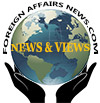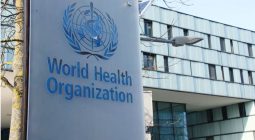The COVID-19 pandemic, climate disasters and ongoing conflict have deepened inequalities among children in Central Asia and Europe. The UN Children’s Fund (UNICEF) has estimated 35 to 40 million children across Europe and Central Asia are living in poverty with inequalities in access to healthcare and education.
Europe and Central Asia also have some of the world’s highest rates of children separated from their families, or in care homes. calling for more robust support for boys and girls at risk of poverty and social exclusion.
War in Ukraine, the pandemic, climate change and the current economic and energy crisis have plunged many families into uncertainty, affecting their well-being and that of their children. Air pollution is the single most significant environmental risk in the region, impacting an estimated four out of five children in Europe and Central Asia.
The global crisis also affected children’s emotional and mental wellbeing, and suicide is now the second leading cause of death in high-income countries in the region.
The Russia-Ukraine war has sparked the number of refugees and migrants arriving in Europe and Central Asia from other parts of the world also continues to increase. Thus, UNICEF urged governments to meet the needs of every child, especially the most vulnerable, and to prioritize children in the collection and analysis of data.
Maternal health setbacks in many parts of the world have contributed to the worrying finding that a woman dies during pregnancy or childbirth around every two minutes. In 2020, about 70 per cent of all maternal deaths were in sub-Saharan Africa. It is estimated 287,000 maternal deaths globally in2020 equivalent to a woman dying every two minutes — or nearly 800 deaths a day.
The leading causes of maternal death are severe bleeding, high blood pressure, pregnancy-related infections, complications from unsafe abortion and underlying conditions that can be aggravated by pregnancy – such as HIV/AIDS and malaria.
In Asian countries including South Korea and Japan, there has been a decline in the number of newly married couples with the recent increase in delays in marriages.
Among newly married couples, 50.4 percent of dual-income couples have not given birth to children, while 39.5 percent of single-income couples have given birth to children. With 40 per cent of the population under the age of 18 years, investments in children and adolescents are important in shaping national development.
The Government of Nepal said overall poverty is decreasing but UNCEF said among Nepal’s 29,164,578 population one out of every 11 children in Nepal dies before reaching the age of five and almost 70,000 children die yearly from preventable causes. One in two children is stunted or underweight, two-thirds of the children are still deprived of at least one of seven basic needs.
In Nepal, despite significant progress, maternal and newborn health continues to be a major public health concern. The MMR is 259 per 100,000 live births and so is the NMR 21 per 1000 live births.
Today Nepal is the third poorest among 58 countries in Asia with the sixth lowest human development ranking but Nepal aspires to be a middle-income country by 2030.
Today, the world slowly emerges from the COVID-19 pandemic. No single woman should die in childbirth.
Unless progress is made on global targets for reducing maternal deaths-most of which are preventable -the lives of over one million more women by 2030 could be at risk. It’s a wake-up call for us to take action which could be difficult for low-income countries to invest in health.
However, today the way children are viewed and treated around the world has changed. Despite many more advances, poverty, inequality, discrimination and distance continue to deny millions of children their rights every year, based on the Convention on the Rights of the Child, adopted by the UN General Assembly in 1989, the decision makers must work to end facing poverty, exclusion, or violence, those with disabilities; children affected or displaced by humanitarian crisis; and children without parental care.
No doubt, the 21st century should be a century of opportunities, advancement for every child.









